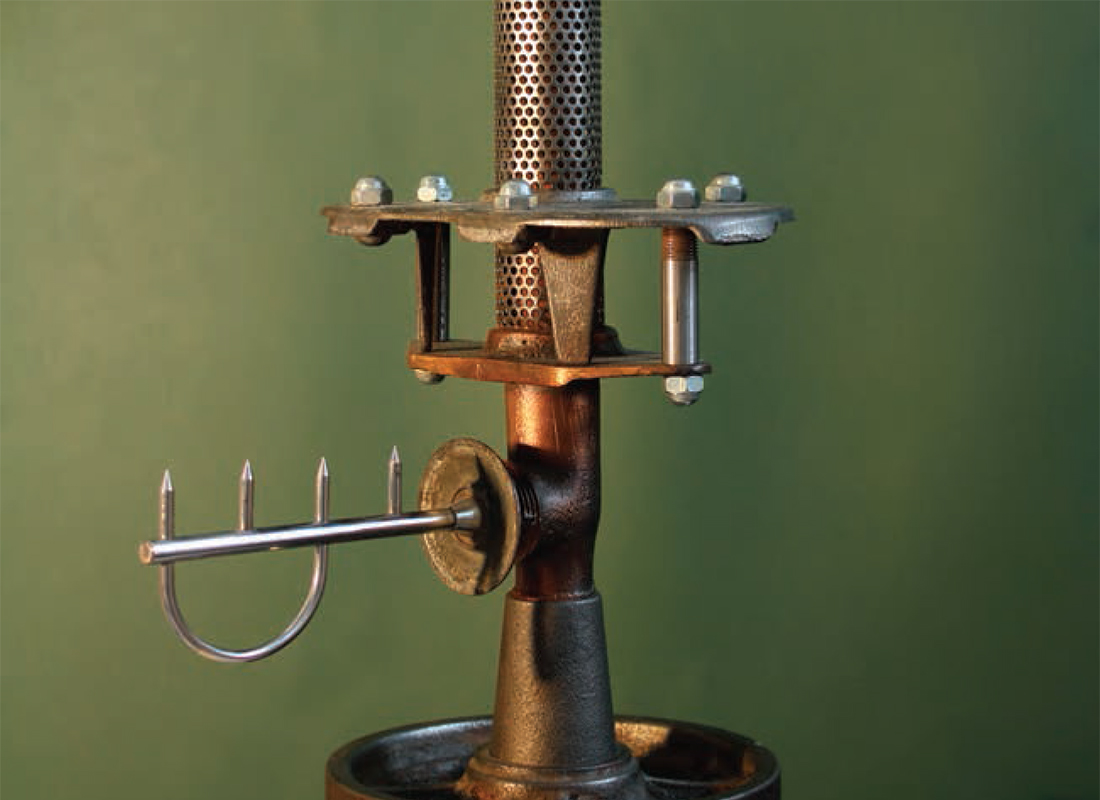The Passion of the Patenteux
Peter Alexander Pór, Tribute to
the Cathars Persona Non Grata
–The Veil of History Exhibition
Bezpala Brown Gallery, Toronto
February 5—25, 2011
Acts of passion break free because they are inherently dynamic.
– Paul-Émile Borduas
Ready-Made Tradition
It’s the avant-garde artists of the early twentieth century who seem mainly responsible for convincing galleries, museums, critics and historians that they should take seriously art by children, the insane, and other eccentrics. Early on, Picasso and friends had their Douanier Rousseau, the Surrealists had their Facteur Cheval, DuBuffet had his practitioners of what he called “l’art brut.“ These were people with no formal training who did their own thing, often obsessively, with materials taken from their immediate surroundings and with little concern for notions of good taste or public acceptance. Now, in Baltimore, there’s a magical place called the American Visionary Art Museum, devoted to the work of such people, emphasizing in its name the extrarational quality of their inspiration. In Québec, such artists are often called “patenteux” with the emphasis on their astonishing inventiveness (as in the word “patent”). Many of these artists go beyond decoration, in directions their neighbors find tasteless or even shocking.
Of course, the avant-garde hipsters knew a good thing when they saw it: a spontaneous expression that ignored conventional taste and called into question the very processes of art making. So they appropriated it for themselves. To name only a few, think of Picasso and Braque and their paintings with collaged objects, of Kurt Schwitters and his Merz, of Marcel Duchamp and his various kinds of readymades, of the European CoBrA and the Montreal Automatist movements (both convinced that “spontaneous” art could have social and political impact) right up through Robert Rauschenberg and more recent Pop and post-modern manifestations. The works of these people sit in the great museums of the world, looking like punks in a parlour. And the avant-garde artists, many of whom had academic credentials, knew there was pleasure in this madness — gathering, discovering, hoarding, looking for the perfect application, a wedding of chance and inspiration. André Breton in L’amour fou (1937) describes himself and Alberto Giacometti eagerly searching through Paris fleamarkets, as if in a dream, trying to follow their desire to the exact object needed for the completion of pieces they were working on.
Peter (Alexander Pór) is obviously in the tradition. Look at the accretions on his canvases, the toys and other gadgets, the wonderfully appropriate strip of decorative lace that forms the baseboard behind Pope Benedict’s throne. Look especially at the three sculptures he calls his homage to the Cathars, made of heavy industrial pulleys and wheels, filters, nuts and bolts, bits of found metal (all with a patina of rust and wear and history that has a beauty of its own, by the way), parts of an old industrial vacuum cleaner, all brought together in a kind of metamorphosis, forming something new and mysterious — elegant in its own way, belying its origins. These objects have an aggressive edge to them with their spikes and trident and bayonet, but always a note of humour as well, little suprises as you catch your eye peering at an eye. Peter’s mock-antiaircraft canon has the same ingenious playfulness, with a bitter undercurrent. Looking at these works, be like the artist: take your time, find the parts, watch how they claim their place. To really appreciate these objects, you need the patience and the innocence of the patenteux.
Ray Ellenwood, a specialist in Surrealism and related avant-garde movements, retired from York University in 2005. His recent publications include a collaboration with Ronald Nasgaard on the catalogue for the exhibition The Automatiste Revolution, Montréal: 1941-1960, shown at the Varley Art Gallery in Markham and the Albright- Knox Gallery in Buffalo, 2009—2010.





